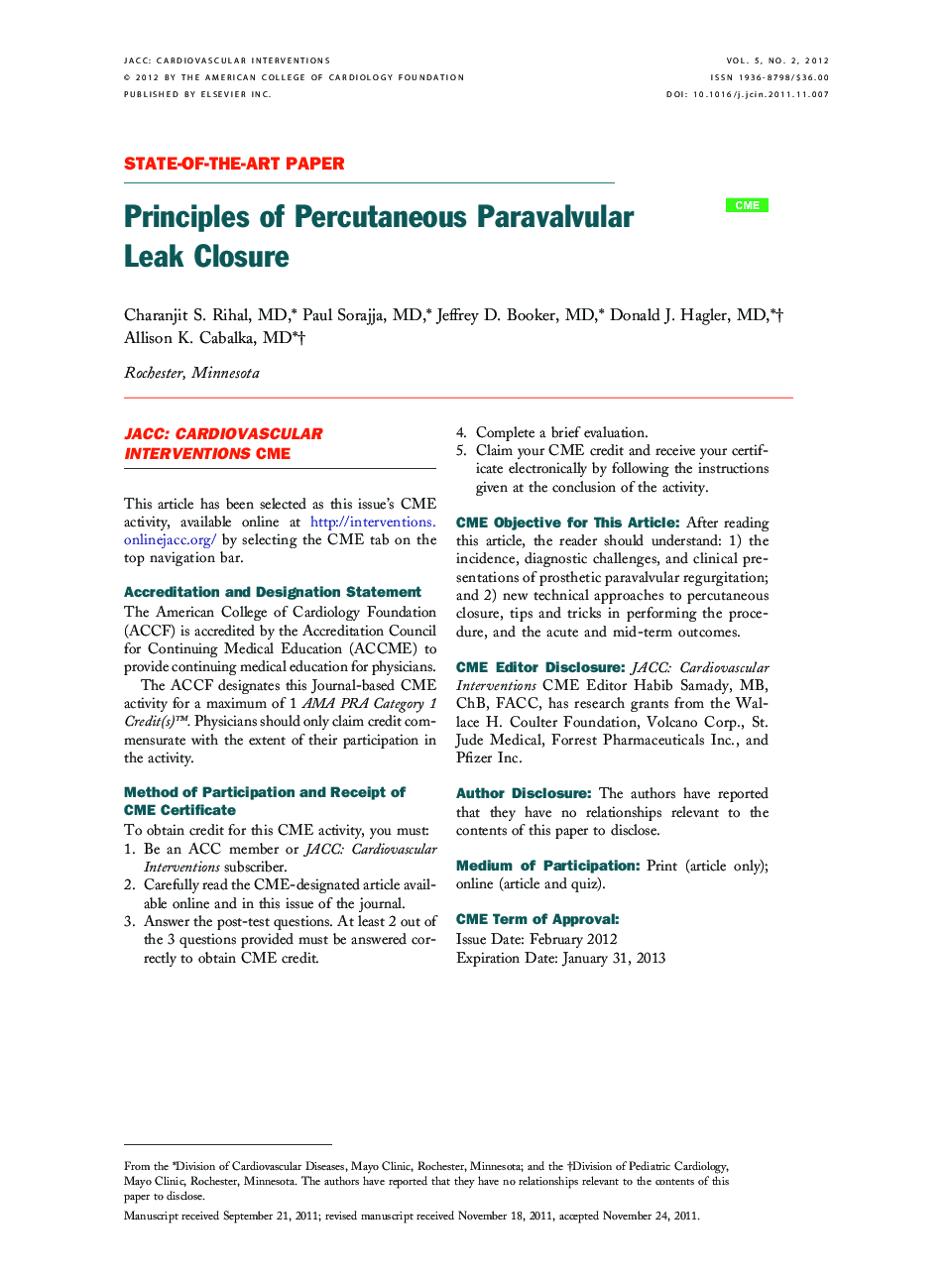| کد مقاله | کد نشریه | سال انتشار | مقاله انگلیسی | نسخه تمام متن |
|---|---|---|---|---|
| 2941687 | 1177082 | 2012 | 10 صفحه PDF | دانلود رایگان |

Paravalvular regurgitation affects 5% to 17% of all surgically implanted prosthetic heart valves. Patients who have paravalvular regurgitation can be asymptomatic or present with hemolysis or heart failure, or both. Reoperation is associated with increased morbidity and is not always successful because of underlying tissue friability, inflammation, or calcification. Comprehensive echocardiographic imaging with transthoracic and real-time 3-dimensional transesophageal echocardiography is key for characterizing the defect location, size, and shape. For paramitral defects, an antegrade transseptal approach can usually be guided by biplane fluoroscopy, and real-time 3-dimensional transesophageal echocardiography can usually be performed successfully. Alternative approaches to paramitral defects include retrograde transaortic cannulation or transapical access and retrograde cannulation. For oblong or crescentic defects, the simultaneous or sequential deployment of 2 smaller devices, as opposed to 1 large device, results in a higher degree of procedural success and safety because the risk of impingement on the prosthetic leaflets is minimized. Most para-aortic defects can be approached in a retrograde manner and closed with a single device. With careful anatomical assessment, procedural planning, and procedural execution, successful closure rates of 90% or more should be attainable with a low risk of device impingement on the prosthetic valve or embolization.
Journal: JACC: Cardiovascular Interventions - Volume 5, Issue 2, February 2012, Pages 121–130